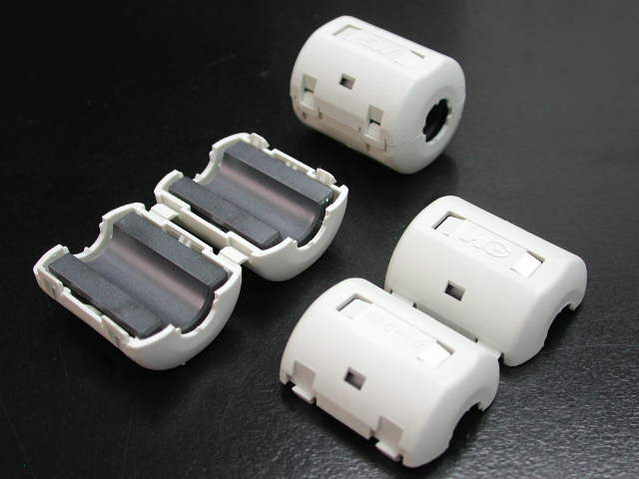Ever wondered what those beads at the end of your power cables or cords are? Those are ferrite beads, a special form of cable ferrites which are present there to suppress the unwanted electromagnetic interference in the cable. But these ferrite beads do not affect the data transmission through the power cable. This is achieved by enabling the lower frequency signals to pass and by suppressing the signals of higher frequencies.

What are Ferrite Beads?
Ferrite beads are simple but effective forms of filters that can be used in a number of areas of electrical equipment. Owing to the attributes of ferrite used within a ferrite bead inductor, they effectively reduce the electromagnetic interference in an electronic appliance.
Basics of Ferrite Bead Inductors
For bead inductors, ferrites prove to be a great core material. Ferrite bead inductors act as normal inductors at low frequencies. But ferrites are known to have high permeability as a result of which they act as brilliant high density inductors. Also, ferrites are highly resistive, so ferrite bead inductors are capable of passing even relatively high frequency signals. However, with the increase in frequency the loss of eddy current also rises. This in turn increases the loss of resistance for frequencies between 10 and 100 MHz.
What makes ferrite bead inductors suitable for electromagnetic interference filtering is the fact that loss of resistivity increases beyond a certain frequency range. High frequency signals get dissipated as resistive losses which mean that there is no way they can reflect back into the system and find another way to radiate or conduct. Rather than being circulated anywhere else in the system, these high frequency signals are dissipated as heat.
If even higher frequencies pass through a ferrite bead inductor, its capacitive reactance starts dominating and it acts as a capacitor. So, you should take care of frequencies 500 MHz and above in order to make sure that the bead inductor does not turn capacitive in nature. If such a case happens, high frequency signals will be able to bypass the resistive loss of the bead inductor.
Utility of Ferrite Beads
Ferrite beads prove to be of a lot of help in many radio frequency applications. Though they have certain limitations, a designer must ensure to maximize the advantages. A few points to remember include:
- Note the Frequency: Since ferrite bead inductors are resistive in nature only over a certain range of frequency, it is important to select a ferrite depending on the frequency range over which resistive absorption is needed.
- Beware of Resonance: Like most of the inductors, ferrites can also become a part of a resonant circuit. So, when ferrite beads are combined with other components that are reactive in the capacitive or inductive regions, one must take extra care.
One of the prime benefits of ferrite beads is its easy installation. Either a single component needs to be inserted into the appliance, or a ferrite bead needs to be put over the wire to ensure filtering. Thus, it is very easy to incorporate these beads into designs.
Forms of Ferrite Bead Inductors
Ferrite bead inductors can be made in a number of forms. The most popular are:
- Small or large sized ferrite bead inductors
- Surface mount ferrite bead inductors
- Clamp ferrite cores
When used intelligently, ferrite beads can prove to be extensively effective in acting as a filter for unwanted signals. This form of cable ferrites can be really effective when placed in a resistive region. Talk to an EMI shielding solutions provider to know more about cable ferrites and how your project can benefit from it.
